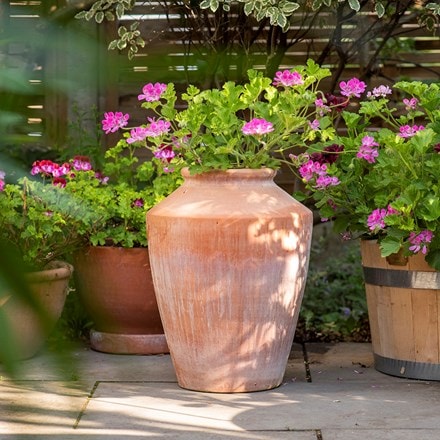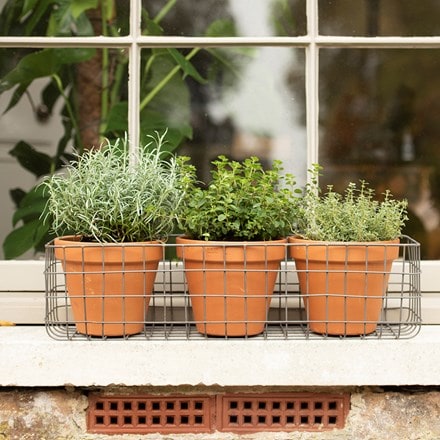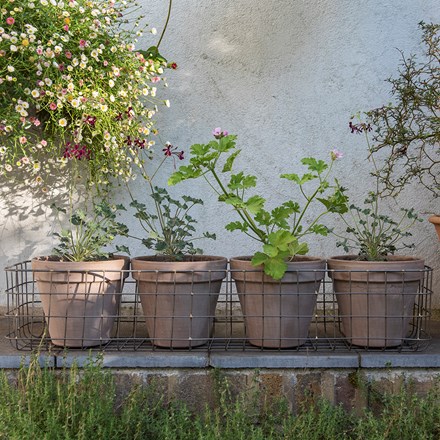Pelargonium (Fragrans Group) 'Fragrans Variegatum'
pelargonium
- 9cm pot
- £7.99
- available to order from spring
- 2 + 1 FREE 9cm pots
- £15.98 £5.33 each
- available to order from spring
Delivery options
- Standard £5.99
- Position: full sun
- Soil: moderately fertile, moist but well-drained soil, or general-purpose potting compost for containers
- Rate of growth: fast
- Flowering period: June to September
- Hardiness: frost tender (will need winter protection
Pelargonium 'Fragrans Variegatum' is a charming, compact perennial with a bushy growth habit, boasting delicate, blush white flowers adorned with intricate pink veining, which are arranged in umbels above the plant's small, rounded leaves.
These leaves possess a subtle variegation, displaying attractive lime-green and mid-green markings. When gently rubbed, they release a pleasant, pungent aroma that can be described as a delightful blend of nutmeg and pine, making this pelargonium a must-have summer plant for pathway pots and patios.
These leaves possess a subtle variegation, displaying attractive lime-green and mid-green markings. When gently rubbed, they release a pleasant, pungent aroma that can be described as a delightful blend of nutmeg and pine, making this pelargonium a must-have summer plant for pathway pots and patios.
Pot up in free-draining compost and grow them on in a bright, frost-free spot. Move plants outside only after all risk of frost has passed, placing them in a sunny, sheltered position. Water regularly, allowing the surface to dry slightly between waterings, as they dislike being constantly wet. Remove faded flowers and yellowing leaves to keep plants tidy and to encourage more blooms.
Feed every couple of weeks through the growing season with a dilute high-potash fertiliser such as Tomorite to support flowering. Pinch back leggy growth to maintain a bushy shape, and bring plants back indoors before autumn frosts if you wish to overwinter them.
Feed every couple of weeks through the growing season with a dilute high-potash fertiliser such as Tomorite to support flowering. Pinch back leggy growth to maintain a bushy shape, and bring plants back indoors before autumn frosts if you wish to overwinter them.



